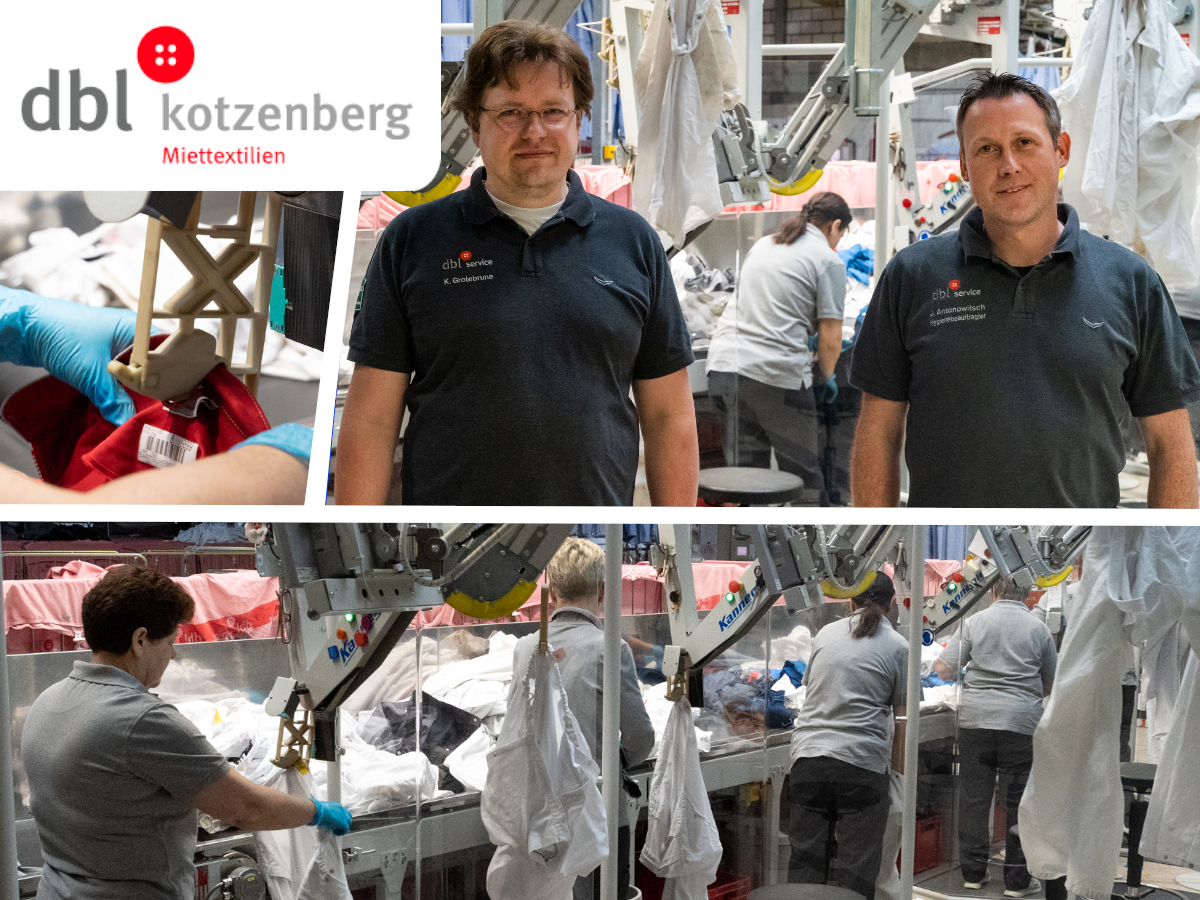The advantages of X-Sort at a glance:
- High output per operator hour of up to 600 parts at each clamping station, as items are not manually sorted but only scanned and clamped ergonomically
- Space-saving sorting without laundry carts
- Reliable planning and trouble-free operation, as each item is registered immediately at the start of the process
As an individual rental service for workwear, DBL Kotzenberg serves a wide variety of customers. "From large customers of the food industry to small workshops, we serve everyone," says deputy operations manager Jörg Antonowitsch. The resulting large variety of articles is a major challenge, especially when it comes to the soiled linen sorting.
X-Sort is a database-supported sorting and transport system for garments that keeps track of a large variety of articles. Laundry is sorted faster and more reliably. After arrival, each piece of garment is scanned by employees via an RFID chip or a barcode in the fabric and attached to a clamp. These simple steps require no special knowledge and can be learned quickly. The scanned information is then matched to the database. The clamped laundry items are then transported to the storage via a conveyor system and sorted into washing batches in lanes according to washing criteria. Once a batch is complete, it gets stored in bags attached to the overhead monorail system and transported towards washing. The immediate registration of each soiled item upon arrival automates subsequent processes and enables transparent and organized planning of the entire operating process.
Before X-Sort was installed at DBL Kotzenberg, many employees had to sort every piece into containers by hand at sorting tables according to up to 30 washing categories. This massive task required a lot of experience in order to be able to perform it as flawlessly and quickly as required. Ergonomics were not optimal either: employees had engage in wide and exhausting movements to grab and throw the laundry into containers. In addition, it was often necessary to leave the workplace in order to sort items into special containers located further away. Besides making life easier for employees, the X-Sort's simple and back-friendly clamping also has a positive effect on productivity: "The fact that the workplace has become so much more comfortable has significantly increased the pieces per operator hour," emphasizes Konstantin Grotebrune.
X-Sort also saves a lot of space: Items arriving are transported directly to the clamping stations on a belt conveyor, thus eliminating laundry carts from blocking the space. This makes for a more pleasant workplace environment and opens up possibilities for further installations. Concerns among plant management about hygiene in the plant turned out to be unjustified. "With the X-Sort, I initially had concerns about cleanliness. After all, the soiled laundry is transported and sorted on the ceiling. In retrospect, however, this fear was not justified. X-Sort is a clean solution," says Konstantin Grotebrune today.
For the plant management, one of the most important aspects of the X-Sort is the transparency of inbound items. In addition to recording each individual piece, damaged items are also already recorded at the clamping stations, if this has not already been done by the customer via an app. Items are therefore already assigned for repair after washing. "We can immediately record which items were turned in by which customer. This allows us to optimally and much more easily plan our whole operation," emphasizes plant manager Konstantin Grotebrune.
